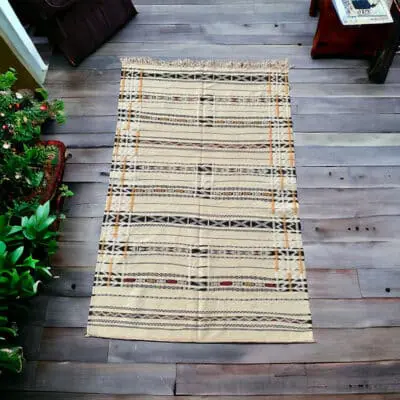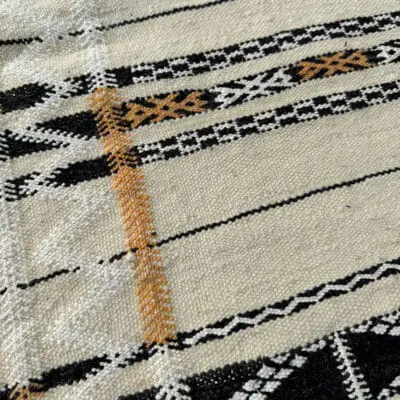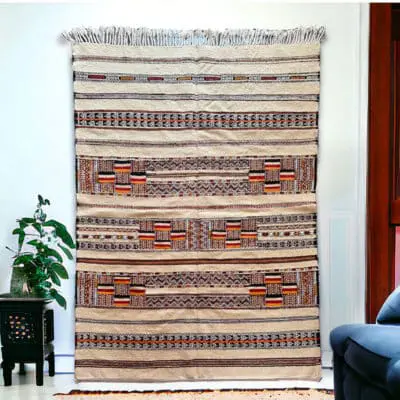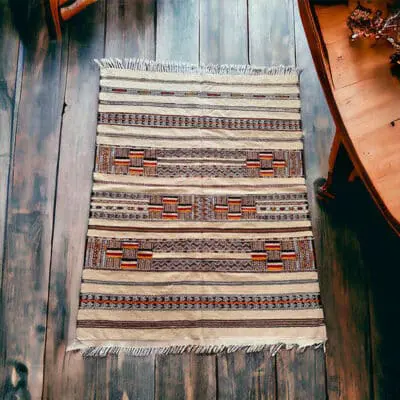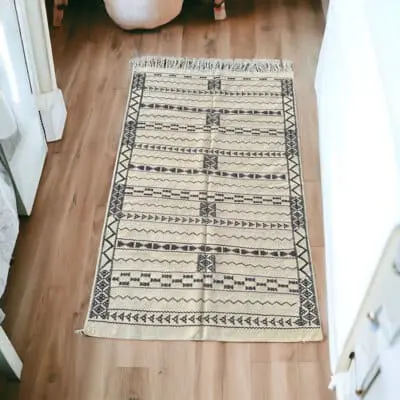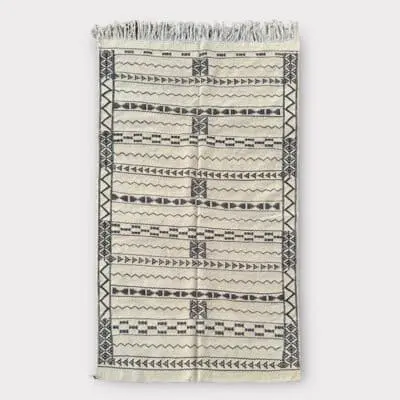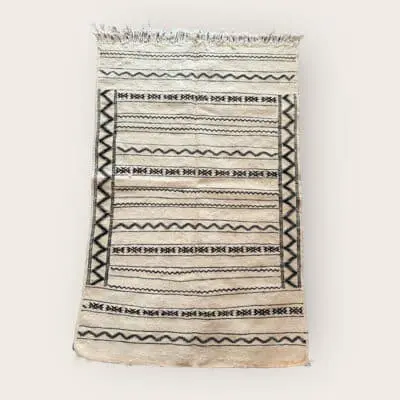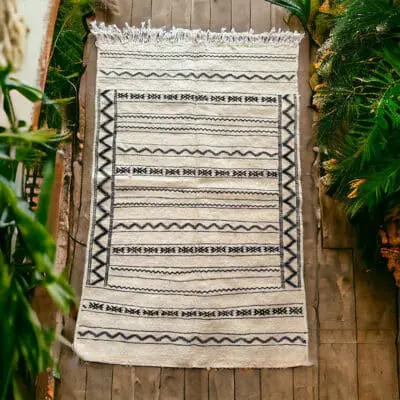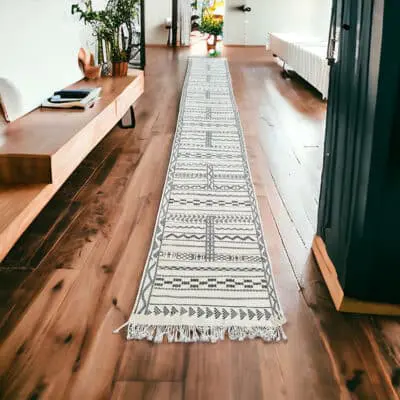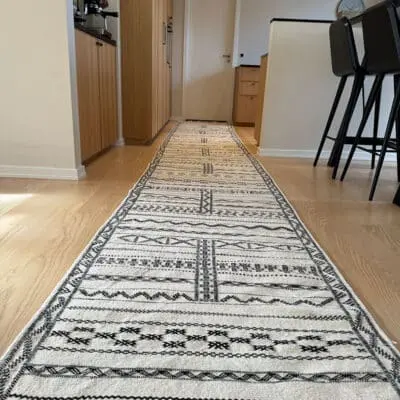Wool rugs kilim
In the heart-warming deserts and rugged mountain landscapes of Morocco, stories, traditions and artistic skills are woven together in beautiful kilim carpets, handwoven by the Berber tribes. These carpets carry a legacy from generations of skilled weavers, and their patterns tell of a timeless culture and a rootedness in nature and nomadic life.
Among the various types of kilim carpets that spring from the weaving huts of Morocco, Chaoui and Zemmour are among the most notable.
Showing all 5 results
-
5.099,00 DKK
-
9.450,00 DKK
-
5.040,00 DKK
-
2.099,00 DKK
-
11.970,00 DKK
Showing all 5 results
Chaoui rugs are a tribute to the rich culture and history of the Chaoui region in eastern Algeria and southeastern Morocco. These rugs are characterized by their simple geometric patterns that often include diamond shapes, zigzag lines and symbols that reflect the Berber tribes' nomadic lifestyle and connection to nature. The color spectrum of Chaoui rugs is usually earthy, with deep reds, blues, greens and browns that reflect the natural pigments used to dye the wool.
On the other hand, Zemmour rugs are a tribute to the creativity and skill of the Zemmour Berber tribe. Woven in the Zemmour region of central Morocco, these rugs often feature more complex patterns and colors. The Zemmour carpets are known for their use of vibrant colors such as deep red, sun yellow and royal blue, creating a visual fireworks display. The patterns in the Zemmour rugs can vary from geometric shapes to abstract patterns that symbolize everything from tribal history to the cycles of nature. At Tibladin, we have chosen the very streamlined carpets in naturally colored wool but with black patterns. They are super nice and are very easy to place in the Scandinavian decor.
Whether it is Chaoui or Zemmour, both types of kilim rugs have a special ability to capture the essence of Berber culture and create a unique and evocative expression of the skill and creativity of the hand weavers. When you look at these carpets, you see not just a piece of textile, but a work of art that tells a story about a people, their traditions and their connection to the land and each other.

